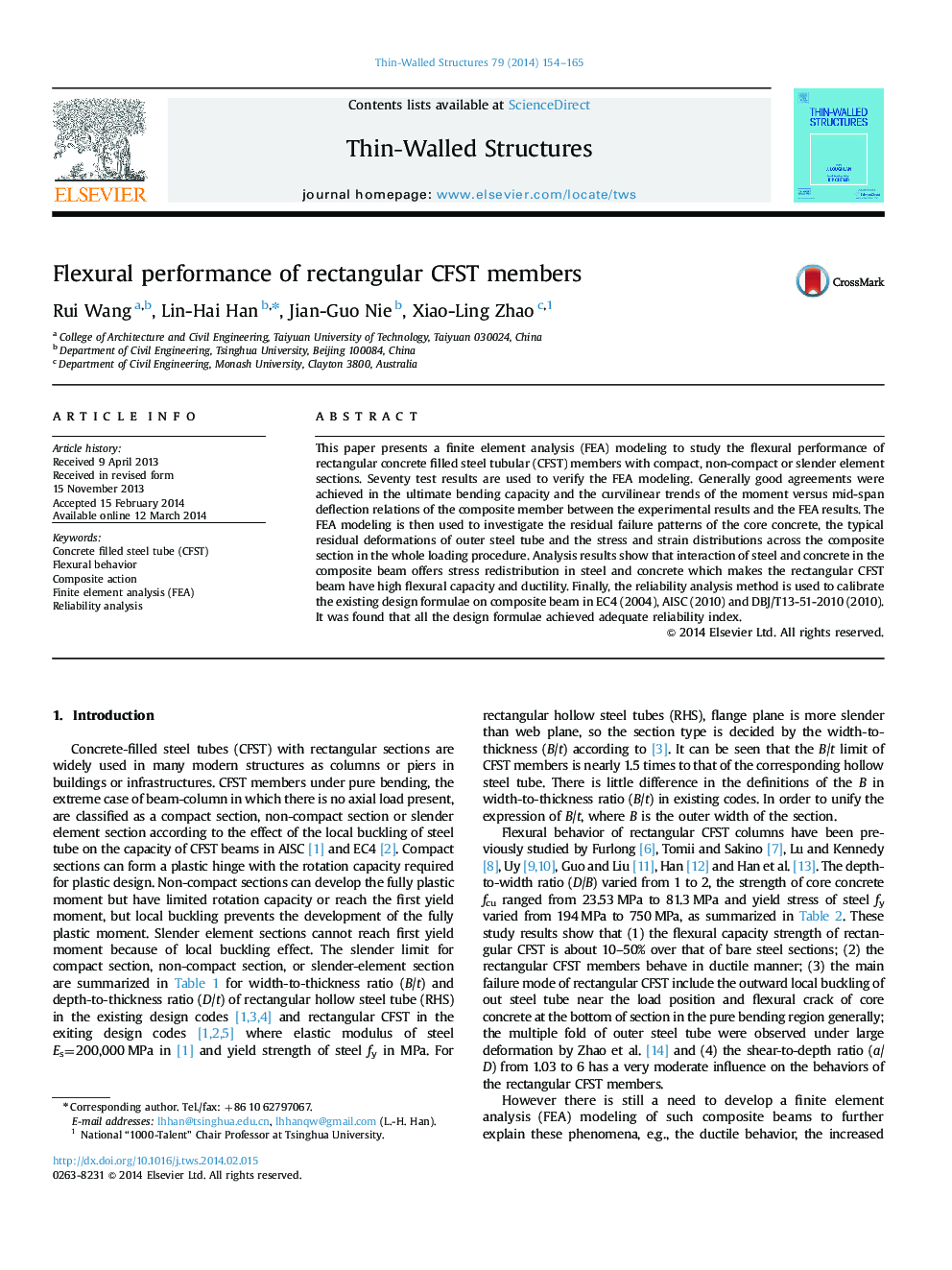| Article ID | Journal | Published Year | Pages | File Type |
|---|---|---|---|---|
| 308990 | Thin-Walled Structures | 2014 | 12 Pages |
•We developed a FEA modeling for rectangular CFST members.•We analyzed the full-range behavior of rectangular CFST members.•We studied the oblique angle θ of diagonal tie in the strut–tie load transfer mechanism with different shear span to depth ratio.•We conducted the reliability analysis for the design formulas in the existing codes.
This paper presents a finite element analysis (FEA) modeling to study the flexural performance of rectangular concrete filled steel tubular (CFST) members with compact, non-compact or slender element sections. Seventy test results are used to verify the FEA modeling. Generally good agreements were achieved in the ultimate bending capacity and the curvilinear trends of the moment versus mid-span deflection relations of the composite member between the experimental results and the FEA results. The FEA modeling is then used to investigate the residual failure patterns of the core concrete, the typical residual deformations of outer steel tube and the stress and strain distributions across the composite section in the whole loading procedure. Analysis results show that interaction of steel and concrete in the composite beam offers stress redistribution in steel and concrete which makes the rectangular CFST beam have high flexural capacity and ductility. Finally, the reliability analysis method is used to calibrate the existing design formulae on composite beam in EC4 (2004), AISC (2010) and DBJ/T13-51-2010 (2010). It was found that all the design formulae achieved adequate reliability index.
